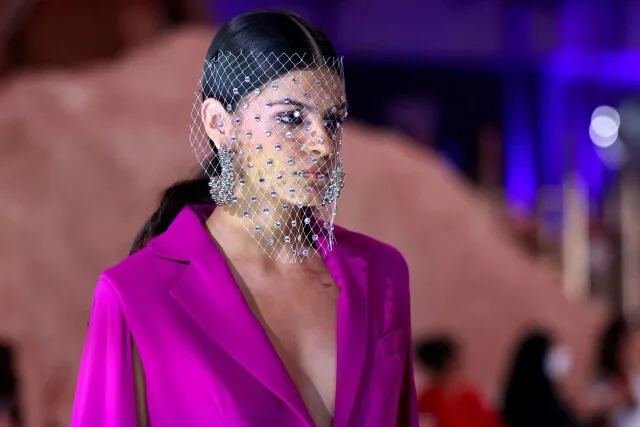Adnan Akbar, the distinguished couturier known for dressing Princess Diana and French first ladies, recently marked a historic moment at Riyadh Fashion Week, showcasing his designs on his native Saudi Arabian runway. This event signals a remarkable shift in a country that once mandated traditional dress codes. Akbar, often hailed as the «Saint Laurent of the Middle East,» was among the standout designers at the inaugural Riyadh Fashion Week.
In the vibrant backdrop of Riyadh’s financial district, Akbar’s runway featured more than two dozen of his opulent gowns, symbolizing a departure from traditional fashion shows in the Gulf kingdom. The mixed-gender audience, including Instagram influencers and diplomats, witnessed a fashion spectacle, breaking away from past women-only gatherings or unconventional drone-led displays.
Abdullah Akbar, son of Adnan and managing director of the family brand, remarked, «It’s a huge change, what’s happening now. I think the world is seeing how creative we are, the strength of the designs that we have.»
As Saudi Arabia extends unprecedented support to established designers like Adnan Akbar and emerging talents, the spotlight is on whether the necessary infrastructure will align with this surge in the fashion industry.
Economic Prospects of Saudi Fashion Industry
According to a report by the Saudi Fashion Commission, the Saudi fashion industry accounted for $12.5 billion in 2022, contributing 1.4% to the national GDP and employing 230,000 individuals. The report suggests that, under favorable conditions, the fashion industry could emerge as a key driver of Crown Prince Mohammed bin Salman’s Vision 2030 reform agenda.
Challenges include reducing dependency on imports, with the kingdom spending $7.3 billion on imported fashion goods in 2021. Riyadh Fashion Week strategically aimed to spotlight local talent, minimizing reliance on international designers.
Burak Cakmak, Chief Executive of the Saudi Fashion Commission, emphasized the goal of building the local economy. Anticipated projects like a new manufacturing space in Riyadh, set to open next year, aim to strengthen local value chains, aligning with the government’s push for non-oil economic growth.
Changing Societal Dynamics Fueling Opportunities
Societal changes under Prince Mohammed have created new opportunities for designers. The removal of abaya and hijab requirements, coupled with efforts to increase female workforce participation, led to a market gap. Mona Alshebil, a designer at Riyadh Fashion Week, seized this opportunity by creating a ready-to-wear collection, catering to professional women seeking modern and respected attire.
The relaxation of strict norms, such as the presence of cinemas and music festivals, has spurred the demand for diverse wardrobe options. Streetwear brands, like 1886, are gaining popularity, offering unisex apparel inspired by traditional Saudi attire.
Investors are taking notice of Saudi Arabia’s fashion scene, with notable deals being sealed. Turmeric Capital’s chairman, Ravi Thakran, drew parallels between Saudi Arabia’s fashion industry and China’s transformative phase two decades ago, predicting significant economic growth and global presence in the coming decade.
The fashion revolution in Saudi Arabia is not merely a local affair; it’s a narrative poised for global recognition, making Riyadh Fashion Week a beacon of change in the global fashion landscape.


































